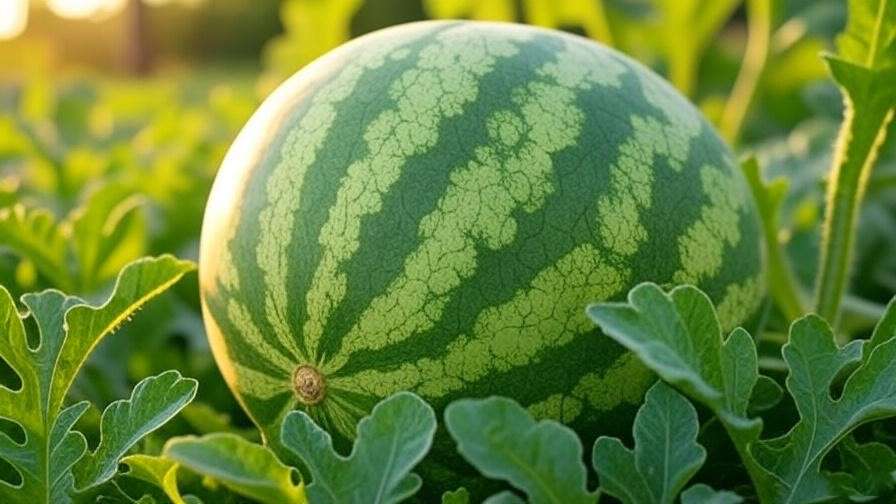Imagine slicing into a golden watermelon, its vibrant yellow flesh bursting with sweet, juicy flavor, fresh from your own garden. This stunning fruit, known for its compact size and unique taste, is a must-grow for any plant enthusiast looking to elevate their garden game. Whether you’re a seasoned gardener or a beginner, mastering golden watermelon care can transform your backyard into a showcase of delicious, eye-catching produce. In this comprehensive guide, we’ll walk you through every step to grow golden watermelons successfully, drawing on insights from horticultural experts and proven growing techniques. From soil preparation to harvesting, you’ll find practical, expert-backed tips to ensure a bountiful harvest.
What is a Golden Watermelon?
Characteristics of Golden Watermelons
Golden watermelons, also known as yellow watermelons, are a delightful twist on the classic fruit. Unlike their red-fleshed cousins, these varieties feature bright yellow or orange flesh with a sweeter, honey-like flavor. Popular cultivars like Yellow Doll and Golden Midget are prized for their compact size, typically weighing 5-10 pounds, making them ideal for small gardens or even container growing. Their striped green rinds and vibrant interior make them a visual standout, perfect for adding flair to your garden and table.
Nutritional Benefits and Culinary Uses
Golden watermelons aren’t just beautiful—they’re packed with nutrition. Rich in vitamins A and C, antioxidants, and lycopene, they offer immune-boosting and anti-inflammatory benefits. Their sweet, crisp texture shines in fresh salads, smoothies, or even grilled as a summer treat. “Golden watermelons are a versatile addition to any diet,” says Dr. Emily Harper, a horticulturist at Cornell University’s Extension Service. “Their unique flavor profile makes them a favorite for creative recipes, from salsas to sorbets.”
Choosing the Right Environment for Golden Watermelons
Climate and Temperature Requirements
Golden watermelons thrive in warm climates, requiring daytime temperatures between 70-85°F (21-29°C) for optimal growth. They need a frost-free growing season of at least 70-90 days, depending on the variety. If you live in a cooler region, don’t worry—you can extend the season with row covers, cloches, or a greenhouse. For example, gardeners in USDA zones 4-6 can start seeds indoors 4-6 weeks before the last frost to get a head start.
Soil Preparation and Testing
Healthy soil is the foundation of a thriving golden watermelon crop. These plants prefer well-draining, loamy soil with a pH between 6.0 and 6.8. Before planting, test your soil using a home testing kit or send a sample to a local extension service for precise nutrient analysis. Amend the soil with organic matter like compost or aged manure to boost fertility. “Soil preparation is critical,” notes veteran grower Maria Sanchez. “Adding 2-3 inches of compost ensures your plants have the nutrients they need for robust growth.”
Sunlight and Space Needs
Golden watermelons demand full sun—6 to 8 hours daily—to produce sweet, juicy fruits. Choose a planting site with unobstructed sunlight and ample space for their sprawling vines, which can extend 6-8 feet. For small gardens, consider trellising or growing compact varieties like Yellow Doll in containers. Space plants 36-48 inches apart in rows 6-8 feet apart, or use a hill planting method to maximize space. For example, a 4×4-foot raised bed can accommodate two plants with proper trellising.
Planting Golden Watermelons: Step-by-Step Guide
Selecting Quality Seeds or Seedlings
Start with high-quality seeds from reputable suppliers like Burpee or Johnny’s Selected Seeds. Look for certified organic or non-GMO seeds to ensure purity. Alternatively, you can use seedlings from a trusted nursery, which can save time but may limit variety options. Seeds offer more control over the growing process and are often more cost-effective. Soak seeds in warm water for 24 hours before planting to enhance germination rates.
When and How to Plant
Plant golden watermelons after the last frost when soil temperatures reach at least 70°F (21°C). In most regions, this is late spring to early summer. Sow seeds 1 inch deep in hills or rows, placing 2-3 seeds per hole to ensure germination. Thin to the strongest seedling once they’re 2-3 inches tall. For seedlings, transplant carefully to avoid root disturbance, ensuring the root ball remains intact. Water thoroughly after planting to settle the soil.
Watering and Mulching
Golden watermelons need consistent moisture, about 1-2 inches of water per week, especially during flowering and fruit set. Use a soaker hose or drip irrigation to deliver water directly to the roots, minimizing leaf wetness and disease risk. Apply a 2-3 inch layer of organic mulch, such as straw or shredded bark, to retain moisture, suppress weeds, and regulate soil temperature. Black plastic mulch is another option, as it warms the soil and boosts early growth.
Caring for Your Golden Watermelon Plants
Watering and Irrigation Best Practices
Proper watering is crucial for golden watermelon success. Overwatering can lead to root rot, while under-watering stresses plants and reduces fruit quality. Aim for deep, infrequent watering to encourage strong root systems. “Consistency is key,” says Sanchez. “I use a drip system to deliver water evenly, especially during hot spells.” Check soil moisture by inserting a finger 2 inches deep—if it feels dry, it’s time to water. Avoid wetting the foliage to prevent fungal issues.
Fertilizing for Optimal Growth
Feed golden watermelons with a balanced fertilizer, such as 10-10-10, at planting and again when vines begin to spread. Switch to a high-potassium formula (e.g., 5-10-15) during fruit development to support sweetness and size. Apply fertilizers according to package instructions, typically every 2-3 weeks. Over-fertilizing with nitrogen can lead to excessive foliage at the expense of fruit, so monitor plant growth. Organic options like fish emulsion or compost tea are excellent for sustainable gardening.
Pruning and Vine Management
Pruning golden watermelon vines improves air circulation and fruit quality. Once plants have 3-4 fruits set, remove new flowers to focus energy on existing fruits. Trim excessive foliage sparingly to maintain photosynthesis. For space-saving, train vines onto a sturdy trellis or A-frame, securing them with soft ties. Support developing fruits with slings made from old t-shirts or netting to prevent vine damage. A well-managed vine produces larger, sweeter fruits with less disease risk.
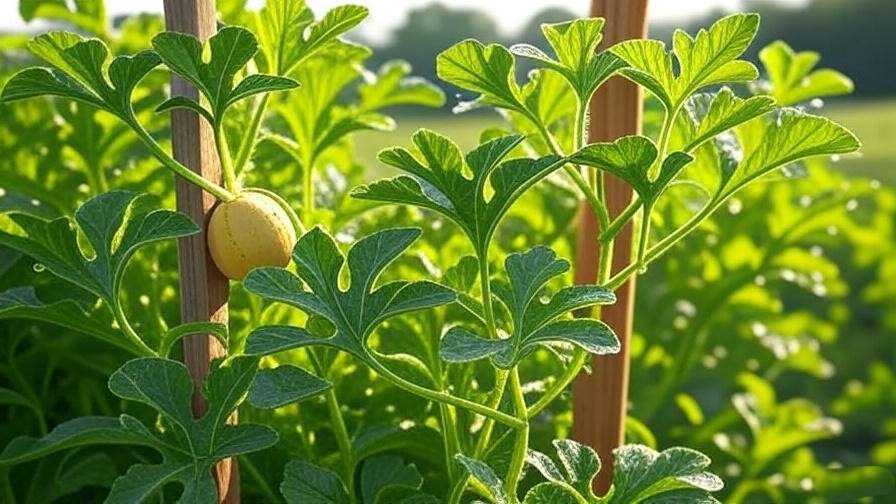
Pest and Disease Management
Common Pests Affecting Golden Watermelons
Golden watermelons can attract pests like aphids, cucumber beetles, and spider mites. Aphids suck sap and weaken plants, while cucumber beetles spread bacterial wilt. Use organic controls like neem oil or insecticidal soap, applied early in the morning for best results. Companion planting with marigolds or nasturtiums can deter pests naturally. Regularly inspect plants for signs of infestation, such as sticky residue or yellowing leaves, and act quickly to prevent spread.
Diseases to Watch For
Common diseases include powdery mildew, fusarium wilt, and anthracnose. Powdery mildew appears as white patches on leaves, while wilt causes sudden vine collapse. Prevent diseases by ensuring good air circulation, avoiding overhead watering, and rotating crops annually. Treat powdery mildew with a baking soda solution (1 tbsp per gallon of water) or approved fungicides. Remove and destroy affected plant parts to limit spread. Crop rotation and resistant varieties like Yellow Doll reduce disease risk.
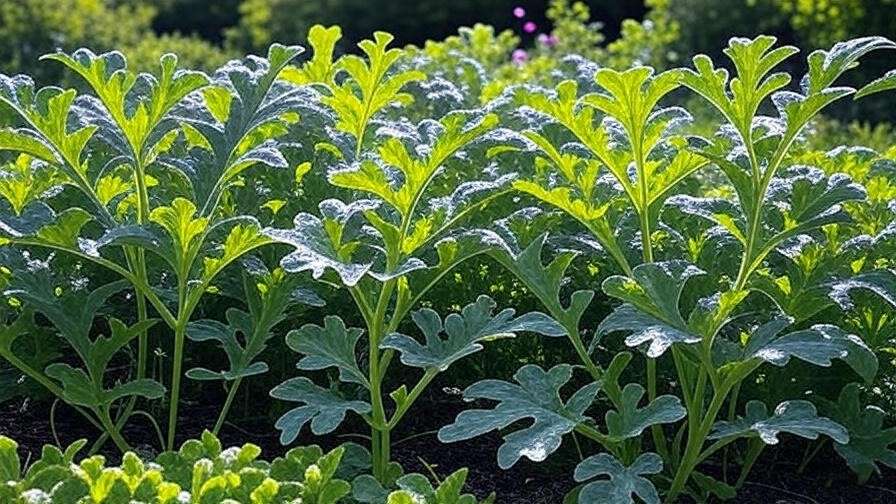
Integrated Pest Management (IPM) Strategies
Adopt an IPM approach for sustainable pest and disease control. Combine cultural practices (e.g., crop rotation, proper spacing), biological controls (e.g., introducing ladybugs for aphid control), and mechanical methods (e.g., row covers during early growth). Monitor plants weekly and keep a garden journal to track pest patterns. This holistic strategy minimizes chemical use and promotes a healthy ecosystem, ensuring your golden watermelons thrive.
Pollination and Fruit Development
Understanding Pollination Needs
Golden watermelons require pollination to produce fruit, relying heavily on bees and other pollinators. Female flowers, identifiable by a small bulb (the ovary) at their base, need pollen from male flowers to set fruit. If pollinator activity is low, hand-pollinate by transferring pollen with a small brush or cotton swab. Plant pollinator-friendly flowers like borage or zinnias nearby to attract bees. A single plant can produce 2-4 fruits with proper pollination.
Supporting Fruit Growth
Healthy fruit development is marked by steady growth and a smooth, glossy rind. Thin fruits to 2-3 per plant to ensure larger, sweeter watermelons. Support heavy fruits on trellises with slings to prevent vine stress. Monitor for color changes—golden watermelons often develop a creamy yellow patch where they rest on the ground. “Thinning is a game-changer,” says Harper. “It focuses the plant’s energy on producing top-quality fruit.”
Harvesting and Storing Golden Watermelons
When to Harvest
Knowing when to harvest your golden watermelons is critical to enjoying their peak flavor. Look for these signs of ripeness: a yellowing or creamy patch on the underside where the fruit rests on the ground, a dull thud when tapped, and a dried, brown tendril near the stem. Most golden watermelon varieties, like Yellow Doll or Golden Midget, ripen 70-90 days after planting, depending on weather and care. To harvest, use clean, sharp pruning shears to cut the stem about 2 inches above the fruit, avoiding damage to the rind. Harvest in the morning when temperatures are cooler to preserve freshness.
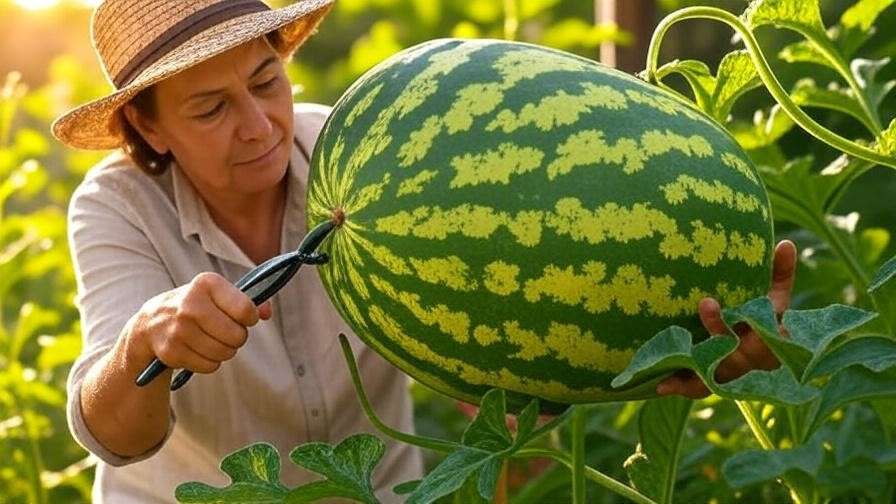
Post-Harvest Handling and Storage
Proper handling ensures your golden watermelons stay fresh and flavorful. After harvesting, gently clean the fruit with a damp cloth to remove dirt, but avoid soaking to prevent rot. Store them in a cool, dry place at 50-60°F (10-15°C), such as a basement or garage. Avoid refrigerating whole watermelons, as cold temperatures can degrade texture. Properly stored, golden watermelons last 2-3 weeks. “Don’t stack them,” advises Maria Sanchez, a veteran grower. “Bruising can ruin the fruit’s quality.” For cut pieces, wrap tightly in plastic and refrigerate for up to 5 days.
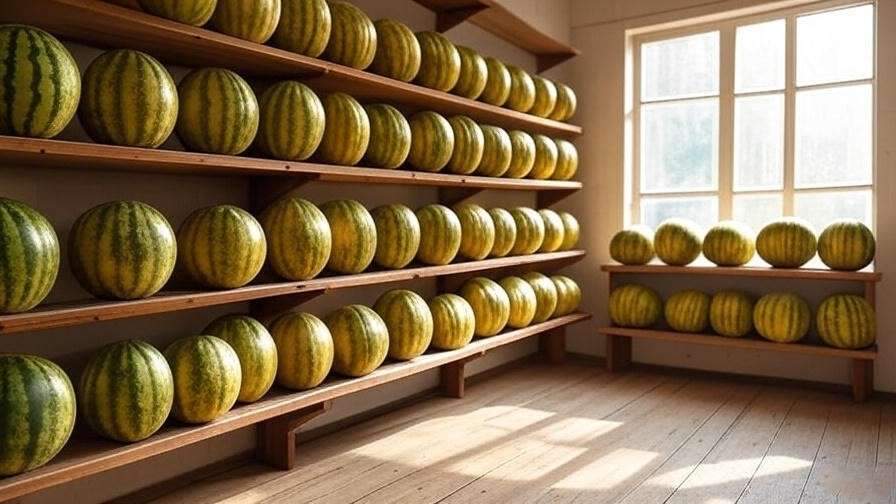
Saving Seeds for Future Planting
Saving seeds from your best golden watermelons allows you to grow them again next season. Select a fully ripe, healthy fruit, cut it open, and scoop out the seeds. Rinse them thoroughly in a colander to remove pulp, then spread them on a paper towel to air-dry for 5-7 days in a well-ventilated area. Store dried seeds in an airtight container in a cool, dark place, labeling them with the variety and date. Properly stored seeds remain viable for up to 4 years, giving you a head start on future crops.
Troubleshooting Common Golden Watermelon Growing Problems
Poor Fruit Set or Small Fruits
If your golden watermelons fail to set fruit or produce small, underdeveloped fruits, several factors could be at play. Inadequate pollination is a common culprit—ensure pollinators have access or hand-pollinate as described earlier. Nutrient deficiencies, particularly low potassium or phosphorus, can also stunt fruit growth. Conduct a soil test and amend with a high-potassium fertilizer if needed. Inconsistent watering, especially during fruit development, can lead to small fruits, so maintain steady moisture levels. Regular monitoring and early intervention can turn things around.
Yellowing Leaves or Stunted Growth
Yellowing leaves or stunted plants often signal environmental stress or pest issues. Overwatering can cause root rot, leading to yellow, wilting foliage—check soil drainage and reduce watering if the soil feels soggy. Nutrient imbalances, such as nitrogen deficiency, may also cause yellowing; apply a balanced fertilizer to correct this. Pests like spider mites or aphids can stunt growth, so inspect leaves for tiny webs or sticky residue. Treat promptly with organic controls and improve air circulation by pruning dense foliage.
Cracked or Misshapen Fruits
Cracked or misshapen golden watermelons often result from inconsistent watering or rapid growth spurts. Heavy rain after a dry period can cause fruits to swell and split. To prevent this, maintain consistent soil moisture with mulch and regular watering. Misshapen fruits may also stem from poor pollination, leading to uneven development. Ensure adequate pollinator activity or hand-pollinate to promote uniform fruit growth. Removing damaged fruits early allows the plant to focus energy on healthy ones.
Expert Tips for Maximizing Your Golden Watermelon Harvest
To take your golden watermelon game to the next level, try these advanced techniques:
- Use Reflective Mulch: Silver or reflective mulch increases sunlight exposure to leaves, boosting photosynthesis and fruit sweetness.
- Optimize Watering Timing: Water early in the morning to allow foliage to dry before evening, reducing disease risk.
- Monitor Soil Temperature: Use a soil thermometer to ensure temperatures stay above 70°F (21°C) during early growth for faster germination.
- Sustainable Practices: Incorporate compost tea or worm castings for organic nutrient boosts and water conservation through drip irrigation.
A success story from Oregon grower Tom Reynolds illustrates the payoff: “By trellising my Yellow Doll plants and using reflective mulch, I harvested 20 pounds of golden watermelons from a 4×4-foot bed!” Such results highlight the power of combining expert techniques with diligent care.
Frequently Asked Questions (FAQs)
Q1: Can golden watermelons grow in containers?
Yes, compact varieties like Yellow Doll thrive in containers. Use a 10-gallon pot with well-draining soil and ensure full sun exposure. Support vines with a small trellis and water consistently.
Q2: How long does it take for golden watermelons to ripen?
Most varieties ripen in 70-90 days from planting, depending on the cultivar and growing conditions. Check for ripeness signs like a yellow underside and dried tendril.
Q3: Are golden watermelons harder to grow than regular watermelons?
Golden watermelons have similar care requirements but may need extra attention to pollination and soil quality. With proper techniques, they’re just as manageable.
Q4: What companion plants work well with golden watermelons?
Marigolds, nasturtiums, and borage deter pests and attract pollinators. Avoid planting near potatoes, which can compete for nutrients.
Q5: Can I grow golden watermelons in cooler climates?
Yes, use season extenders like greenhouses, row covers, or black plastic mulch to maintain warmth. Start seeds indoors 4-6 weeks before the last frost.
Conclusion
Growing vibrant golden watermelons is a rewarding journey that combines science, patience, and a touch of creativity. By preparing your soil, providing consistent care, and addressing challenges like pests or poor pollination, you can enjoy a bountiful harvest of sweet, golden-hued fruits. Whether you’re a novice gardener or a seasoned pro, these expert-backed tips—rooted in horticultural research and real-world experience—will guide you to success. Start planting today, and share your golden watermelon triumphs in the comments below! For more plant care insights, explore our guides on soil testing and companion planting.













